Key takeaways:
- Breakdancing is a powerful form of individual expression that connects personal struggles and triumphs through artistic movement.
- Competition fosters growth, resilience, and community among dancers, turning losses into valuable learning experiences.
- Embracing defeat can inspire creativity and lead to personal growth, pushing dancers to explore new styles and techniques.
- Strategic adaptability and mental preparation are crucial for success in battles, allowing dancers to enhance their performance and remain focused.
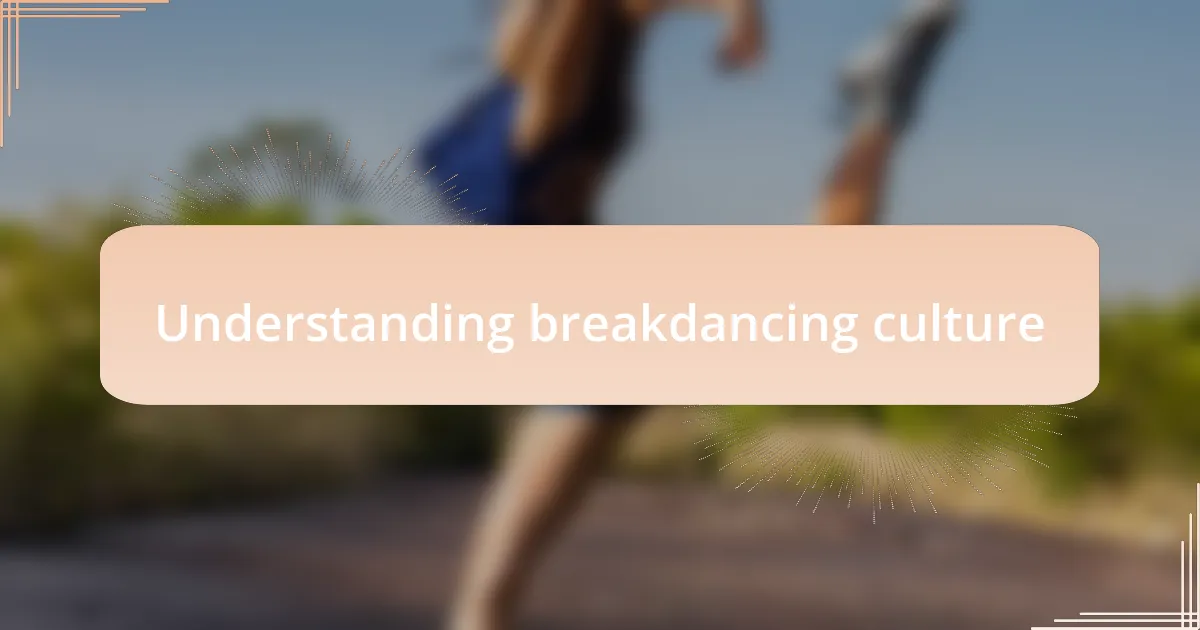
Understanding breakdancing culture
Breakdancing culture is deeply rooted in community, creativity, and individual expression. I remember my first jam; the energy was electric as b-boys and b-girls showcased their skills, each move a story waiting to be told. It made me ponder—how does every spin and freeze encapsulate the struggle and triumph of the dancer?
At its heart, breakdancing honors originality and the journey of self-discovery. I’ve seen dancers pour their emotions into their routines, transforming personal challenges into a physical narrative. Isn’t that what we all strive for? To express our own victories and defeats through artistry, and to connect with others who might understand that journey?
Furthermore, the dance isn’t just about competition; it’s a language. Each style, from fluid top rock to powerful down rock, communicates a dancer’s unique voice. I often ask myself, how can one art form hold so much history and yet evolve continuously? It’s a testament to the passion and resilience of the breakdancing community, reminding us all that every step we take is part of a larger dance.
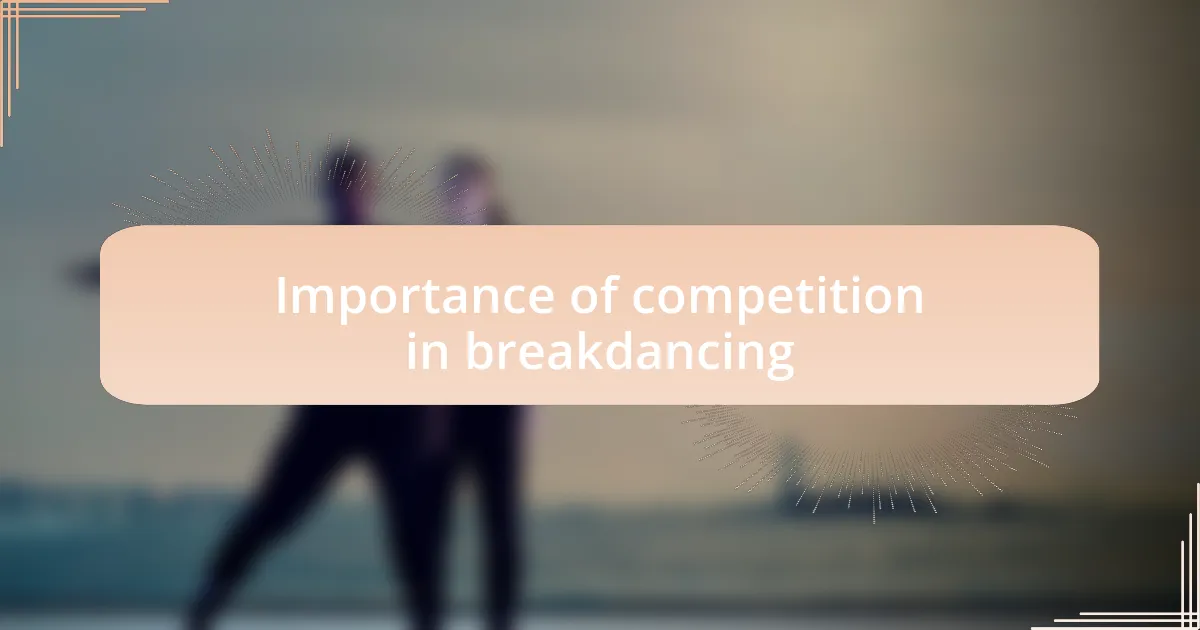
Importance of competition in breakdancing
The role of competition in breakdancing cannot be overstated. I’ve stepped into cyphers, feeling the adrenaline of going head-to-head with fellow dancers, knowing that each battle pushes me to elevate my skills. Isn’t it fascinating how competition becomes a catalyst for growth, forcing us to innovate and refine our personal styles in front of an audience?
In my experience, competitions aren’t just about winning; they create an environment where we learn resilience. I remember losing a crucial battle early on and walking away with a mix of disappointment and determination. That loss taught me to analyze my performance, identify my weaknesses, and return stronger than ever. Have you ever found that your biggest setbacks become your greatest teachers?
Moreover, these competitions foster a sense of camaraderie amongst dancers. After intense battles, I’ve often found myself sharing tips and experiences with my opponents. It’s a reminder that while we compete fiercely, we’re part of a collective journey. How can we grow without the challenges we face together? In this dance, every clash fuels our passion and connection to one another, carving out a tight-knit community that thrives on shared experiences.
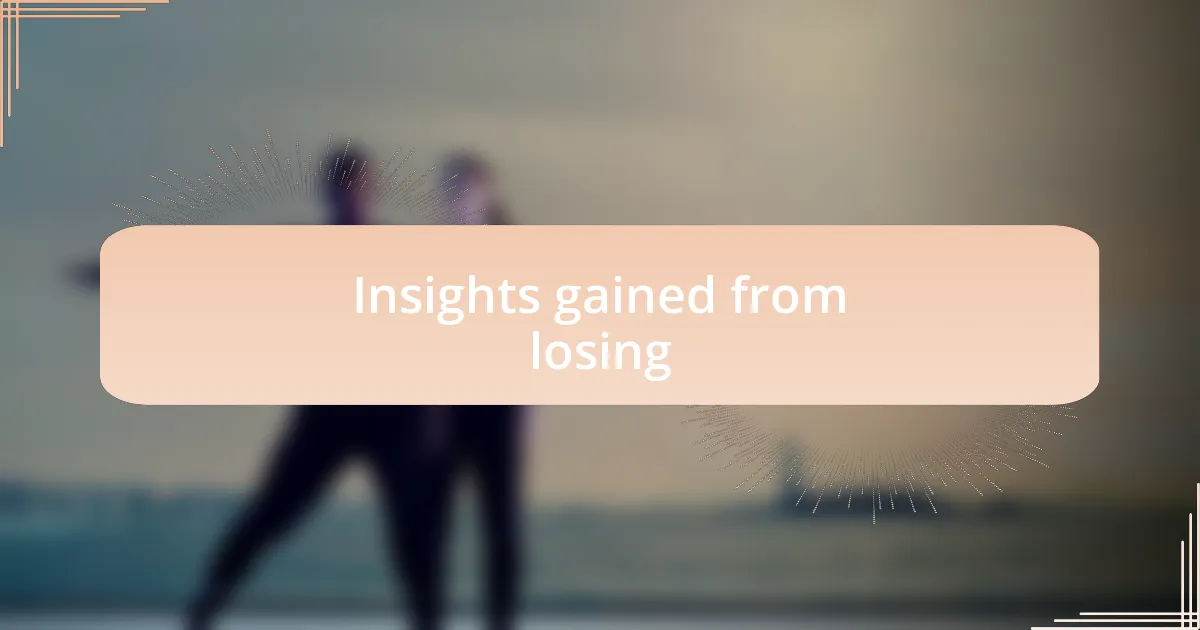
Insights gained from losing
Losing in battle often reveals the gaps in my skills that I might overlook otherwise. After one particularly tough competition, I found myself analyzing not just my moves, but my mental state during the dance. Did my nerves get the best of me? Recognizing these moments has made me work harder on my mindset, transforming my approach to both practice and performance.
Every loss brings with it a unique lesson. I remember a battle where I felt outmatched, yet rather than sulking, I took the time to chat with the winner afterward. That conversation opened my eyes to different techniques that I had never considered. Isn’t it amazing how an unexpected loss can lead to valuable insights about our own artistry?
I’ve learned that embracing defeat can inspire creativity. After losing a few key battles, I began to experiment with styles that felt outside my comfort zone. This journey taught me that losing doesn’t mean failure; it can actually be the spark that ignites my growth as a dancer. Have you discovered something new in yourself after a setback?

Personal growth through challenges
Personal growth often emerges from grappling with our weaknesses. I recall a battle where I completely blanked mid-performance, feeling the weight of the moment crush my confidence. Instead of dwelling on that embarrassment, I took it as a sign to delve deeper into my preparation. It was a turning point for me—understanding that my mental rehearsal needed as much attention as my physical moves.
What surprises me is how each loss seems to serve as a catalyst for self-discovery. After a particularly humbling experience, I started journaling my thoughts immediately following a competition. This practice revealed patterns in my mindset that I had previously overlooked. Have you ever noticed how documenting your feelings can shed light on what you truly value in your craft?
In my journey as a breakdancer, I’ve realized that vulnerability often leads to strength. One of the toughest battles I faced left me questioning my skills. However, I harnessed that doubt and turned it into a driving force, fuelling an unprecedented level of dedication. It’s curious how the moments that shake us can ultimately forge our resilience—don’t you think?
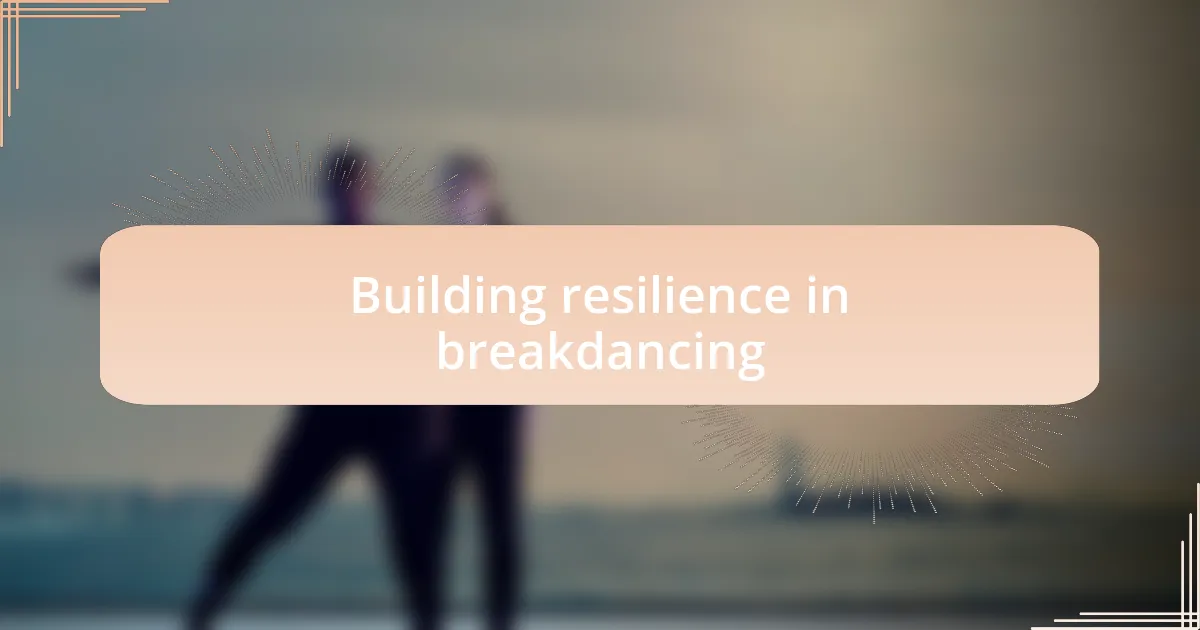
Building resilience in breakdancing
Building resilience through breakdancing isn’t just about physical strength; it’s equally about mental toughness. I remember a time when I lost to a dancer whose style completely blew me away. As I watched them celebrate, instead of feeling defeated, I recognized their uniqueness. I made it a point to study their moves in depth, transforming the sting of loss into an opportunity for growth. Have you ever found inspiration in your toughest competition?
Engaging with the community also plays a crucial role in resilience. I reached out to fellow dancers after facing setbacks, sharing our experiences and frustrations. This camaraderie was uplifting; it taught me that everyone struggles, but it’s how we respond that defines us. It’s funny how conversations with others can ignite a spark of motivation, don’t you think?
Every time I stepped onto the dance floor after a setback, I carried a renewed sense of purpose. I pushed myself to experiment with new styles and techniques I had shied away from before. The fear of losing again was there, but so was the excitement of trying something new. That shift in mindset made all the difference—I learned to see each battle as a chance to evolve rather than just a test of skill. How has your perspective on failure changed over time?
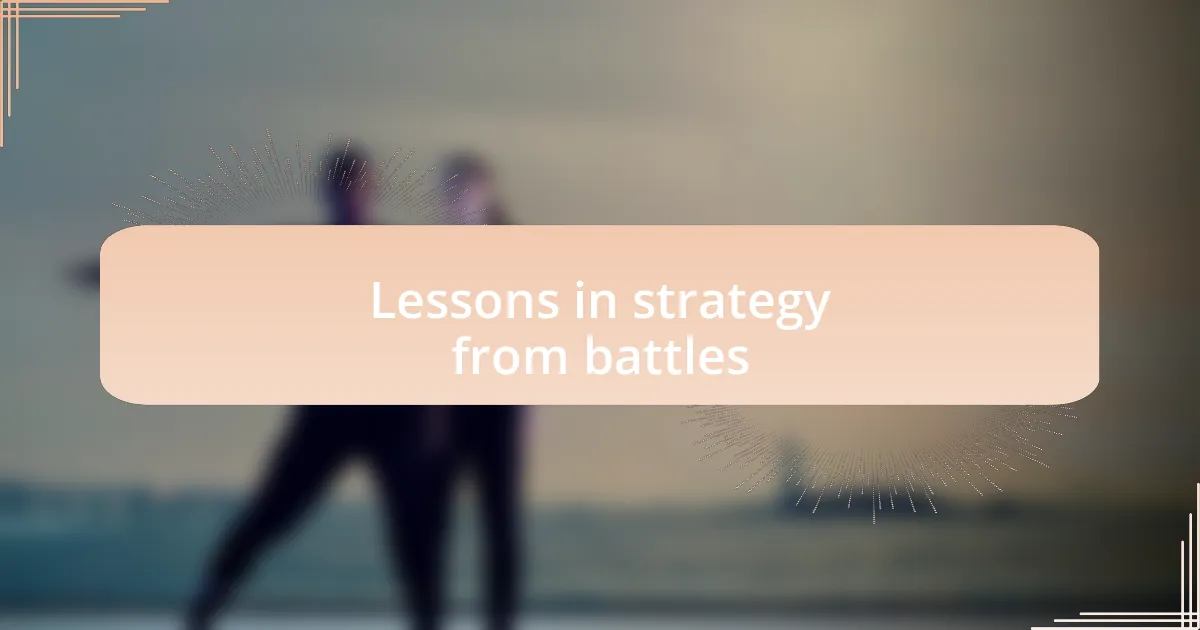
Lessons in strategy from battles
When I look back at my battles, I realize that strategy is often as important as skill. There was a competition where I faced a dancer who was technically better but had a predictable routine. That week, I focused on creating unexpected transitions in my choreography. I surprised them in the final round, leaving the judges—and myself—damn impressed. Have you ever turned a perceived weakness into a winning strategy?
Another key lesson I learned is the power of adaptability. In one battle, I went in with a plan but quickly realized my opponent’s energy was unlike anything I had prepared for. Instead of sticking rigidly to my initial strategy, I shifted my focus to countering their moves with fluidity. Embracing spontaneity not only saved me that day, but it also added layers to my dancing style I hadn’t explored before. Isn’t it fascinating how sometimes stepping outside your comfort zone can yield the best results?
Lastly, I discovered the importance of mental preparation in strategy. During a particularly tough battle, I spent time visualizing my performance—every move, every transition. This mental rehearsal didn’t just build my confidence; it also helped me to stay calm when things didn’t go exactly as planned. I found that staying focused on my own flow kept me from getting distracted by my opponent’s energy. How do you prepare mentally for your most challenging battles?

Applying losses to improve skills
When I think about my losses, it’s clear to me that they serve as an unexpected teacher. I remember getting knocked out early in a regional competition. At first, I felt defeated, but rather than wallowing in it, I dissected that battle for weeks. What went wrong? I realized I hadn’t pushed my boundaries. Understanding my limits allowed me to focus on skills that truly needed work. Have you ever taken the time to evaluate a loss instead of just feeling bad about it?
There was a time I lost a battle because I underestimated my opponent’s unique style—something I had never seen before. Instead of just brushing it off, I immersed myself in learning about that style. It was uncomfortable at first, yet this challenge expanded my versatility. It made me rethink my entire approach to training. Isn’t it interesting how a defeat can open doors to new possibilities, pushing us to explore areas we’d previously ignored?
After a particularly tough series of losses, I adopted a growth mindset, pushing myself to see each setback as a stepping stone. I began journaling my experiences, noting how each battle—win or lose—contributed to my overall growth. This mental shift made me realize that every encounter on the dance floor was an opportunity for improvement. Have you ever kept track of your battles? Reflecting on those moments really turned my defeats into fuel for progress.